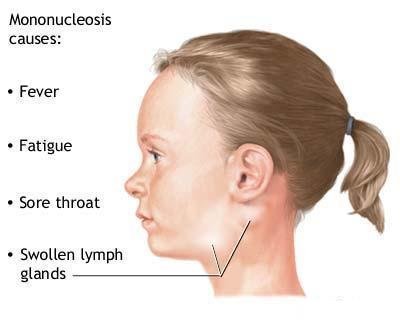

Because EBV is so sneaky, infections are common. The bottom line is that it's hard to prevent mono from spreading. So there's a very small chance that people who have had mono in the past can pass it to others, even when they feel OK. extreme tiredness, or fatigue a high fever a headache body aches and muscle weakness a red, sore throat swollen glands in the neck or underarms an. That person might not feel ill or show any mono symptoms, but can spread the virus to other people. Sometimes the dormant virus can "wake up" and find its way into a person's saliva (spit). It can take as long as months for your energy to come back completely. Mononucleosis (mono) is a clinical syndrome that usually results from infection with the Epstein Barr virus (EBV).

Then, the virus stays dormant (inactive) in the body for the rest of a person's life. Health experts aren't sure how long people with mono stay contagious after symptoms are gone, but it seems they can spread the infection for months after that. People are definitely contagious while they have symptoms, which can last 2–4 weeks or even longer. In fact, most people have been infected with EBV by the time they reach adulthood. So they may not know they have been infected, but they can still pass it to others. Fever of 100-103 F (37.8-39.4 C), which is usually worst during the. To make things even more confusing, some people can carry the virus without ever getting any mono symptoms. Symptoms: Severe sore throat, which is almost always present and lasts about 6-10 days.

It takes a while for mono symptoms (like tiredness, fever, muscle aches, headache, or sore throat) to show up - about 1–2 months, in fact. But they may not know that they have the virus. People who have mono can be contagious from the time they first become infected. Mono, or mononucleosis, usually is caused by an infection with the Epstein-Barr virus (EBV). But the virus can surface from time to time and risk infecting someone else. If you get mono, the virus stays in your body for life. Your doctor will want to rule out other illnesses, such as strep throat. doi:10.The way mono works in the body is tricky, so lots of people are confused about how long it is contagious. You have mono symptoms for longer than 10 days or you have a severe sore throat for more than a day or two. The use of tetanus post-exposure prophylaxis guidelines by general practitioners and emergency departments in the Netherlands: a cross-sectional questionnaire study. BMC Fam Pract. What are the signs and symptoms of mono Extreme tiredness or weakness Sore throat or swollen tonsils Fever Tender, swollen lymph nodes on the sides and back of your neck Headache and muscle aches Night sweats Loss of appetite How is mono diagnosed Your healthcare provider will ask about your symptoms and examine you.
MONO SYMPTOMS IN ADULTS SKIN
Other symptoms include swelling of the lymph nodes in the armpits and the groin area, skin rash, loss of appetite and night sweats. The disease is spread through saliva and can cause fever. Fever, sore throat and swelling of the neck lymph nodes, the more typical symptoms of mono, develop a day or two later.
MONO SYMPTOMS IN ADULTS MANUAL
Manual for the Surveillance of Vaccine-Preventable Diseases Chapter 16: Tetanus. Swollen lymph nodes in the neck, armpits or groin. These symptoms may last for four weeks or longer: Enlarged spleen or liver.



 0 kommentar(er)
0 kommentar(er)
